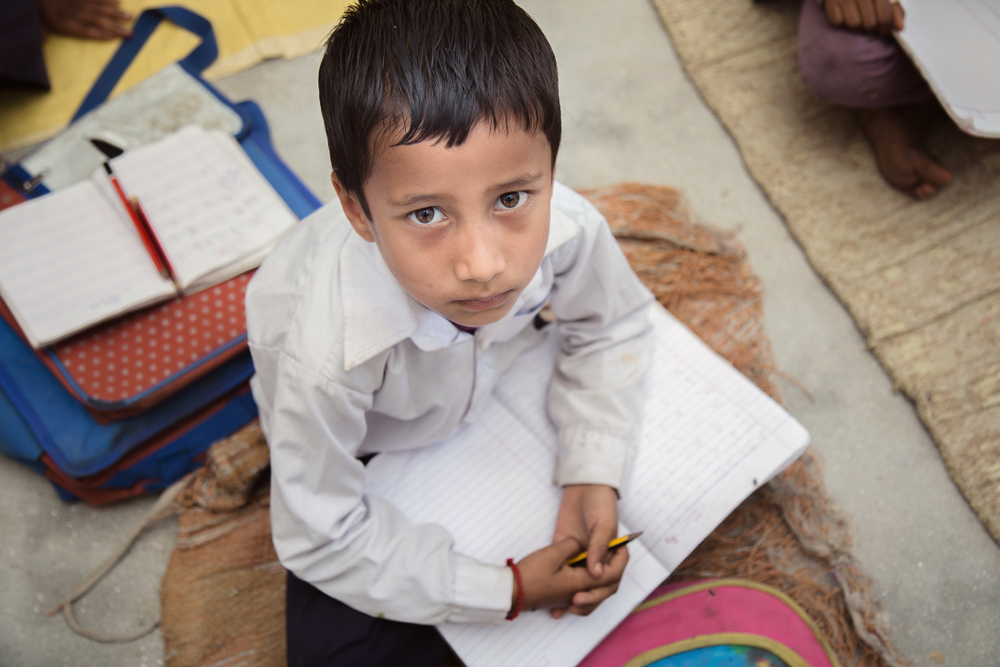Contents:
- Medical Video: What Are The Different Types Of Malnutrition?
- 1. Lack of iron
- 2. Lack of iodine
- 3. Lack of vitamin A
- 4. Lack of vitamin D
Medical Video: What Are The Different Types Of Malnutrition?
School-age children (6-12) really need food full of nutrients to support their needs and development. But apparently, there are still some children who actually experience a lack of nutrients, especially the lack of micronutrients. What are the most common cases of malnutrition?
Micronutrients are nutrients that are needed in small amounts in the body but have a very large impact on carrying out metabolism. In the news posted on the page of the Ministry of Health of the Republic of Indonesia, children have three main problems with malnutrition, namely iron deficiency, vitamin A, and iodine. Although now these 3 problems have begun to improve, parents must remain vigilant. As well, there is one more thing that must be monitored now, which is vitamin D deficiency.
To recognize what types of nutritional deficiencies parents need to be aware of, see the explanation below.
1. Lack of iron
The World Health Organization or WHO estimates that around 53 percent of school-aged children experience iron-deficiency anemia globally. Especially in developing countries. Iron serves to carry oxygen to all body cells to work properly.
Iron deficiency anemia is a condition in which the body is deficient in iron resulting in a decrease in the number of red blood cells. Iron deficiency anemia has a severe impact on children's cognitive and physical development.
Studies show that with enough iron in a child's body, eating children will increase concentration, school performance and learning achievement.
According to the Indonesian Pediatrician Association, the cause of iron deficiency anemia in children aged over 5 years to adolescence is due to excessive bleeding, and excessive menstruation specifically in girls. Bleeding conditions can be caused due to worm infections, for example hookworms.
The most common symptom is
- The skin is always pale
- Limp
- Easily tired
- Easy to get an infection because of a decrease in immune system
- Declining learning achievement
- Decreased appetite
According to the Dietitians of Canada, food sources that are rich in iron include:
- Beef
- Fish
- Chicken meat
- Spinach
- Broccoli
- Heart
- Nuts such as almonds and cashews
- Tempe
To help optimize the absorption of iron from plant-based food sources such as spinach, broccoli and others, it is also necessary to consume enough vitamin C to help optimize its absorption in the body.
2. Lack of iodine
Iodine deficiency (iodine) is one of the public health problems in several developing countries. The body cannot produce iodine by itself, so iodine is very important to get from daily food. Iodine can be found in a variety of foods, including:
- Fish
- Seaweed
- Milk and other dairy products
- Egg
- Shrimp
Naturally, daily food does not contain too much iodine. In some countries, iodine is added to food additives, one of which is salt. In Indonesia alone iodine is added to kitchen salt to overcome the problem of lack of iodine, commonly referred to as IDD (Iodine Deficiency Disorders).
Iodine is one of the important nutrients needed by the body for the production of thyroid hormones. When the body experiences iodine deficiency, the thyroid gland enlarges to capture as much iodine as possible from food that enters the body. Enlargement of the thyroid gland is also known as goiter.
The increasingly severe condition of iodine deficiency can lead to mental retardation and developmental disorders in children called creatinism. Children may have short stature and experience hearing and speaking disorders.
3. Lack of vitamin A
According to WHO, vitamin A deficiency affects around 85 million school-age children in the world and is a problem that is often faced by countries in Africa and Southeast Asia.
Vitamin A deficiency is the main cause of preventable blindness in children. This type of malnutrition also causes impaired immune function, poor iron metabolism, and acute respiratory infections.
Overcoming vitamin A deficiency is very important for the survival of children. The importance of vitamin A even in some countries including Indonesia provides vitamin A supplementation, even since 6 months old children. Vitamin A can also be obtained from various food sources.
Sources of vitamin A can be obtained include:
- Heart
- Fish
- Fish oil
- Vitamin A fortified milk
- Egg
- Margarine fortified with vitamin A
- Vegetables
4. Lack of vitamin D
Lack of vitamin D is one type of nutritional deficiency that must be considered in children in their infancy. Because, lack of vitamin D at this time is very dangerous for growth.
Vitamin D is needed for bone growth and development. Not only that, this vitamin also helps absorb and maintain calcium and phosphorus in the body in order to build strong bones.
If a child is deficient in vitamin D, the child is at risk of experiencing delayed or delayed motor development, muscle weakness, and fractures.
Children who are at risk for vitamin D deficiency include children who usually have always closed skin, have certain organ abnormalities such as liver or kidney disease, and children who spend more of their time inside the house and don't get much exposure to sun sinaar.
Sources of vitamin D can be obtained from:
- Cheese
- Beef liver
- Cheese
- Egg yolk












